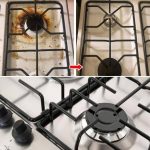ADVERTISEMENT
Some coffee machines have removable components, for example the filter holder or the water tank. In this case, you can remove these parts and wash them thoroughly with hot water and neutral soap, or always with vinegar or baking soda-based compounds. You can also use a soft-bristled toothbrush when the machine is disassembled to clean the most difficult to reach areas.
How to avoid mold formation
Mold formation is inevitable, but that doesn’t mean you can’t do anything to try to prevent the problem. As always when it comes to household appliances, the secret is all in maintenance: a good routine, in fact, not only guarantees a long life for your appliance but also allows you to prevent the appearance of mold.
First of all, if you use a capsule or pod machine, always remember to remove them after use even if the machine has a system for collecting used ones: residues and humidity, in fact, cause mold to proliferate very quickly. Precisely for this reason, it would be good to clean the machine after each use, eliminating coffee residues and drying the parts that remain damp.
a regularly the water tank, especially after using the machine, wash it thoroughly and let it dry completely before reassembling it and if your device requires the use of filters or has a compartment with the filter make sure to do the same thing. Above all, never leave coffee residues inside.
Many machines have a self-cleaning program, so in this case start it at the recommended frequency because it is a very useful process. It is also recommended, if possible, to use filtered water to prepare the coffee because it contains fewer minerals and impurities and therefore reduces the risk of mold formation, as well as fighting the formation of limescale.
ADVERTISEMENT




